Another massive work on classic salmon flies from UK writer Martin Lanigan-O'Keeffe, this time on the flies from the House of Hardy.
Updated or edited 10 months ago
I was blown away by Martin Lanigan-O'Keeffe’s previous book on the flies from Farlows, which was an immense collection of fly patterns gathered from all kinds of sources and made into a bibliographical catalog on the flies produced by the UK store Farlows in the era of the full dressed salmon flies.
A lot of people know Farlows, but when the name Hardy comes up, even more people will nod and recognize the brand. Hardy – or Hardy Brothers and later House of Hardy – was an even larger producer of salmon flies than Farlows, employing dozens of tyers in their fly shop in Alnwick as well as having tyers located elsewhere in England.
The introduction to the new book covers the way the shop operated, and is fascinating reading. Letters, orders and notes on the tying are quoted, and the author covers in detail the specification of materials like flosses, silks and hooks, all richly illustrated and very useful to the contemporary tyer who wants to tie a fly from the Hardy catalog precisely as it was tied back then. Reading through these first pages is both educating and entertaining, and sets the scene perfectly for the rest of the book, conveying the tone of voice and ambiance of the Hardy fly shop and its way of operating. The story of the “pattern box” and how Hardy’s used notes and template flies to keep a very high standard is particularly interesting, and tells a story about the quality that was required of the tyers, or fly dressers as they were called. Becoming a fly dresser wasn’t easy and good tyers weren’t easy to find. Apprenticeships in the shop (yes, you could become a fly dresser apprentice) lasted five years for men and four years for women. The men mainly tied salmon flies and the women trout flies, because “strong hands are needed to tie salmon flies”. Remember that all flies were tied in the hand, not using a vise.
strong hands are needed to tie salmon flies
The main part of the book – like its predecessor – is the fly listings. We simply start off at A with the Abinger and end at Y with the Yellow Peacock and Yellow Silk. And no, there’s no Z – and no Zulu… Underway there are more than 30 “themed” sections, like “The Baden-Powell Patterns”, “Grubs, Shrimps and Prawns” and a large section on “The Irish Flies”, which serve as great distractions in the seemingly endless lists of flies – with both distractions and endless used in the most positive sense imaginable.
Because it’s the endlessness that’s one of the really strong aspects of the book. It lists more than 1000 patterns and has pictures of original flies for almost 800 of them. Most of the flies are in surprisingly good condition, some even pristine. Many are gnawed by the teeth of time, and a few are obviously damaged. But all offer an interesting look into the general style of the Hardy fly shop and of course the shape and proportions of the single pattern.
Mixed in with the flies, you will find the above mentioned sections as well as all kinds of little quirky facts and illustrations like labels, notes, materials, pictures from catalogs and more, all serving to support and extend the thorough description of each pattern. All patterns have detailed lists of materials, and combined with the text and tables in the introduction and the samples depicted underway, you should be able to tie any of the flies listed.
There are flies, which have never been published before, and, as was the case with the Farlows book, there are many, which are quite unknown. Both categories are bound to thrill any salmon fly tyer looking for new inspiration.
Some patterns might use hard-to-get materials, some even materials, which are illegal to trade or own, but the listing is there, and it’s then up to you to find a suitable substitute if you want to tie it.
So, with the danger of repeating myself, I cannot be anything but awestruck over the scope and volume of this work like I was by the previous. It’s a fantastic resource for the salmon fly tyer and a great legacy of salmon fly history, which has been properly researched, recorded and organized by the author. It’s even heftier and more fascinating than the Farlows book, and if you are a salmon fly tyer or interested in salmon fly history – and the history of Hardy – there are no excuses… apart from the price, of course… Books of this caliber don’t come cheap, and parting with UK£ 75.- or close to 100 US$ can seem a bit steep for a book. But the large format, the 630 pages and the amount of work that has gone into these many pages – and not least the resulting quality – does make it worth the price.
- Log in to post comments

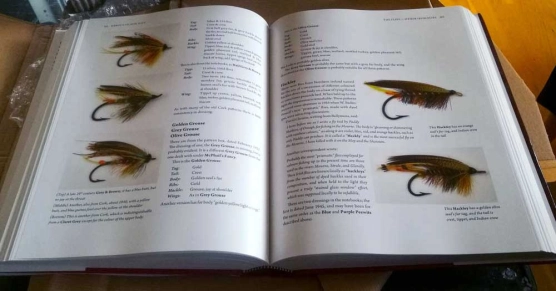
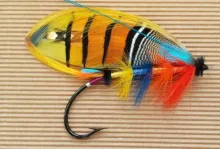
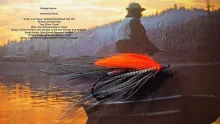
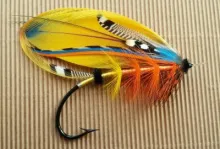
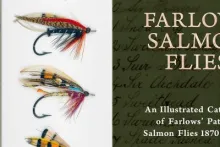
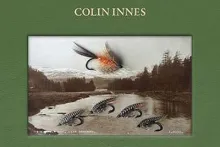
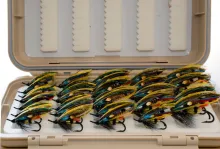

Book Availability
I would live to add this book to my collection, but I cannot find a retailer! Ug! Can anyone help?
Ask Paul Morgan
Eric,
Contact Paul Morgan from Coch-y-Bonddu Books.
Contact form: https://www.anglebooks.com/contacts/
Telephone: 01654 702837 (+441654702837 from outside the UK)
Email: orders@anglebooks.com
He should be able to help you.
Martin
Book Availability
Thanks Martin! I will do it now.
Book Availability
Just ordered it,thanks again Martin, now to save my pennies for the Farlow's book!